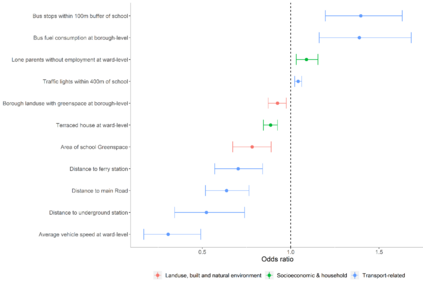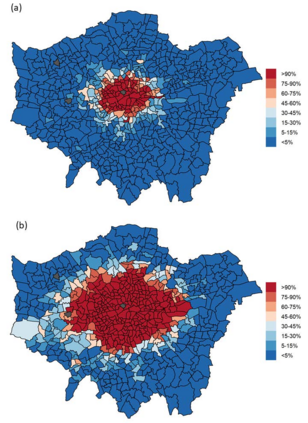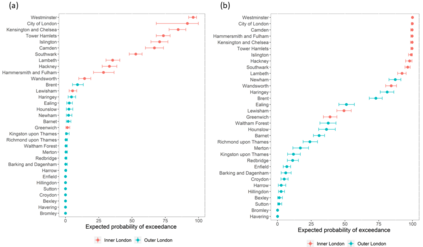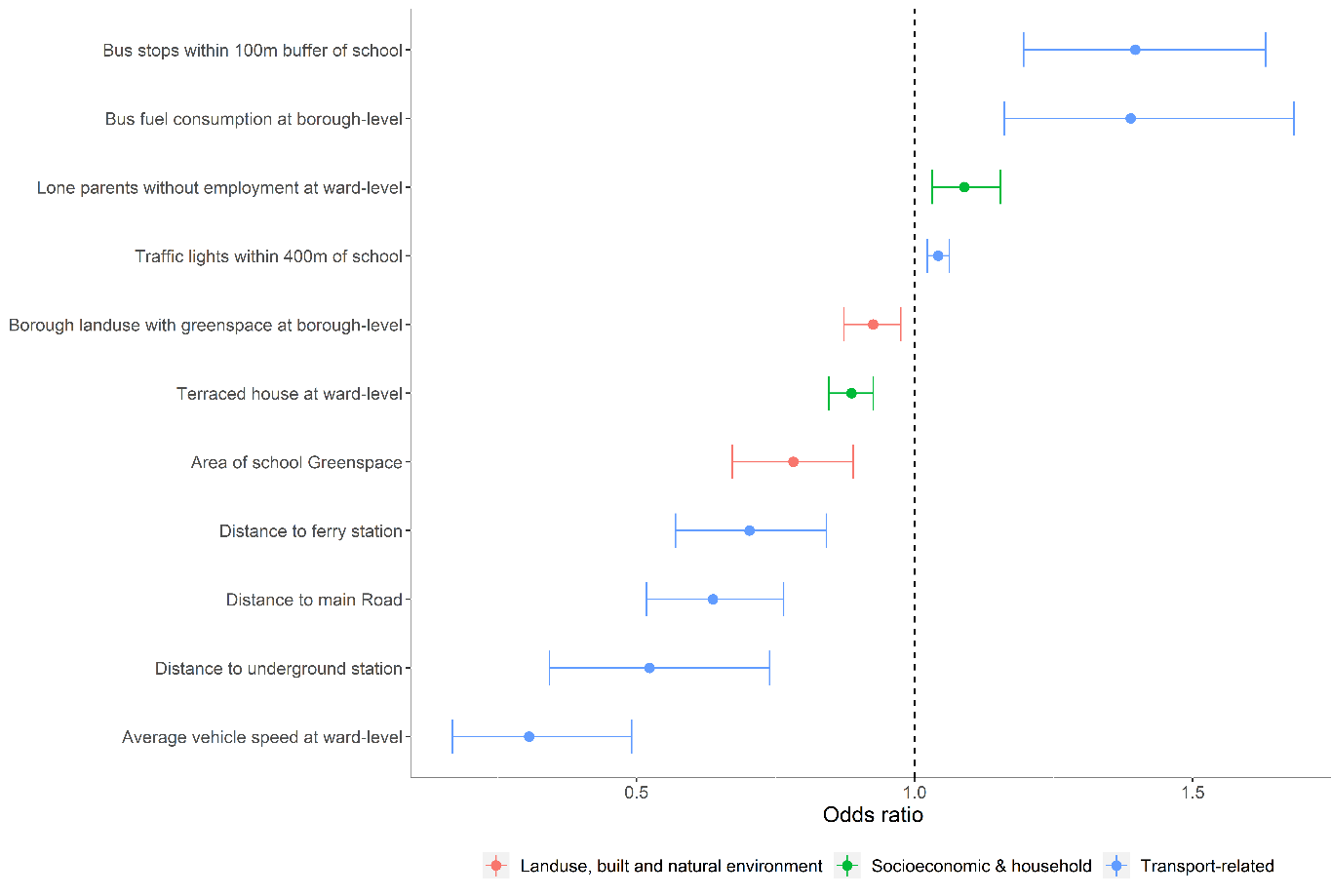Despite several national and local policies towards cleaner air in England, many schools in London breach the WHO-recommended concentrations of air pollutants such as NO2 and PM2.5. This is while, previous studies highlight significant adverse health effects of air pollutants on children's health. In this paper we adopted a Bayesian spatial hierarchical model to investigate factors that affect the odds of schools exceeding the WHO-recommended concentration of NO2 (i.e., 40 ug/m3 annual mean) in Greater London (UK). We considered a host of variables including schools' characteristics as well as their neighbourhoods' attributes from household, socioeconomic, transport-related, land use, built and natural environment characteristics perspectives. The results indicated that transport-related factors including the number of traffic lights and bus stops in the immediate vicinity of schools, and borough-level bus fuel consumption are determinant factors that increase the likelihood of non-compliance with the WHO guideline. In contrast, distance from roads, river transport, and underground stations, vehicle speed (an indicator of traffic congestion), the proportion of borough-level green space, and the area of green space at schools reduce the likelihood of exceeding the WHO recommended concentration of NO2. As a sensitivity analysis, we repeated our analysis under a hypothetical scenario in which the recommended concentration of NO2 is 35 ug/m3, instead of 40 ug/m3. Our results underscore the importance of adopting clean fuel technologies on buses, installing green barriers, and reducing motorised traffic around schools in reducing exposure to NO2 concentrations in proximity to schools. This study would be useful for local authority decision making with the aim of improving air quality for school-aged children in urban settings.
翻译:尽管英国实施了多项国家和地方清洁空气政策,但伦敦的许多学校违反了世卫组织推荐的空气污染物浓度(如NO2和PM2.5),而此前的研究则强调了空气污染物对儿童健康的重大不利健康影响。在本文件中,我们采用了巴伊西亚空间等级模型,以调查影响学校在更大伦敦(联合王国)超过世卫组织推荐的NO2(即每年平均40微克/立方米)浓度的可能性的因素。我们考虑了许多变量,包括学校的特点及其来自家庭、社会经济、运输相关、土地使用、建筑和自然环境特点的邻里特性。结果显示,与运输有关的因素,包括学校附近交通灯和公共汽车停靠的数量,以及公共汽车燃料消耗量等,是增加不遵守世卫组织推荐的NO2(即每年平均40微克/立方米)标准的可能性。相比之下,距离公路、河运和地下站(交通拥堵指标),改善区级绿色空间的比例,以及学校绿地空间面积,降低了学校中超过NO2 质量的交通流量的可能性,我们建议以NO2 的准确度为基础,我们建议对建筑质量进行一项分析。







